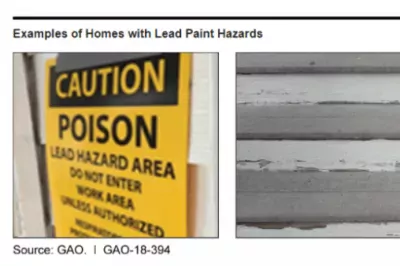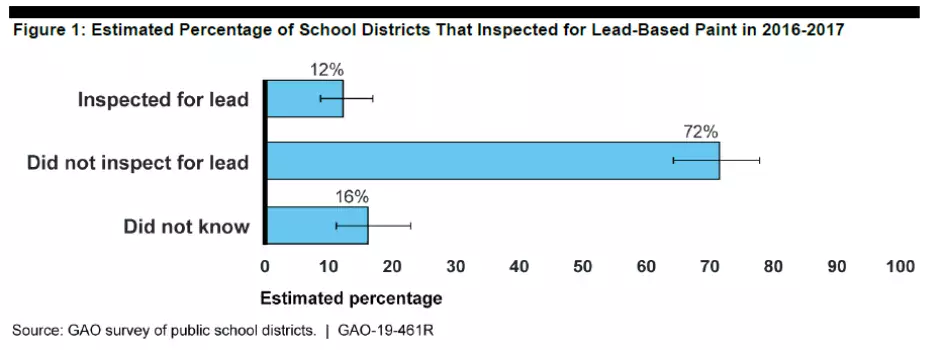The Risks of Lead Paint and How Lead is Detected in Blood
Lead exposure poses significant health risks—particularly to children whose growing bodies absorb more lead than adults. In recognition of Lead Poisoning Awareness Week, the WatchBlog is highlighting the dangers of lead poisoning.
On Tuesday, we looked at the risk that lead in water poses to children at their schools and child care centers. The most common source of lead exposure for children, however, actually comes from lead paint hazards in homes and buildings (including schools) built before 1978—the year the government restricted lead-based paint sales.
Today’s WatchBlog explores our work on lead-based paint and how elevated lead levels in blood can be detected in those who have been exposed to it.
Image

Lead paint in schools
In schools, lead dust usually comes from lead-based paint that’s disturbed during renovations, deteriorating paint, and lead-contaminated soil.
In a 2019 report, we surveyed schools about how they’ve dealt with lead paint. We found that about 12% of school districts nationwide inspected for lead-based paint in 2016-2017. About half of those districts found lead-based paint, and all of them took action to reduce or eliminate it or had plans to do so.
Image

Lead paint in homes
In homes, infants and young children are particularly at risk of lead exposure because they frequently crawl on the floor and more often ingest nonfood items.
For a 2018 report, we reviewed the Department of Housing and Urban Development’s efforts to reduce lead exposure in housing, including its lead-reduction grants to state and local jurisdictions. From 2013-2017, HUD awarded over $500 million in these grants—71% of which went to locations in the Northeast and Midwest, which are known to have a high prevalence of lead paint hazards.
We found that HUD could improve its processes for identifying high risk areas for lead paint hazards and recommended, among other things, that it strengthen its oversight of public housing authorities’ compliance with lead paint regulations. In November 2019, we updated these recommendations in a statement for the record to Congress.
Lead safety in your home
If you think your home has lead-based paint, the Environmental Protection Agency (EPA) recommends a number of steps you can take to protect your family from lead hazards, including:
- Keep painted surfaces in good condition to minimize deterioration
- Clean floors, window sills, and other surfaces where lead dust can collect regularly
- Talk to your landlord about fixing surfaces with peeling or chipping paint if you rent
- Hire only EPA- or state-approved Lead-Safe certified renovation firms when renovating, repairing, or repainting if you own
- Consult your healthcare provider about testing your children for lead exposure. Your pediatrician can conduct a simple blood test.
In January, EPA issued a new brochure about protecting your family from lead at home. Click here to find out more.
Screening for elevated lead levels in young Medicaid beneficiaries
Blood lead screenings are important for identifying children with elevated blood lead levels, as lead exposure can harm and affect nearly every system of the body and cause developmental delays.
According to the Centers for Disease Control and Prevention, a simple blood test is the best readily available way to measure for lead exposure. But, we found that data from the Centers for Medicare & Medicaid Services on blood lead screenings is incomplete and inaccurate for children enrolled in Medicaid—which provides health care for low-income and medically needy people. This could mean that the number of children not receiving these potentially lifesaving screenings may be higher. And since no one knows how many young children enrolled in Medicaid were actually screened, we recommended improving the collection of such data.
Want to know more about this issue and other health issues facing children? Check out our Children’s Health and Safety page.




